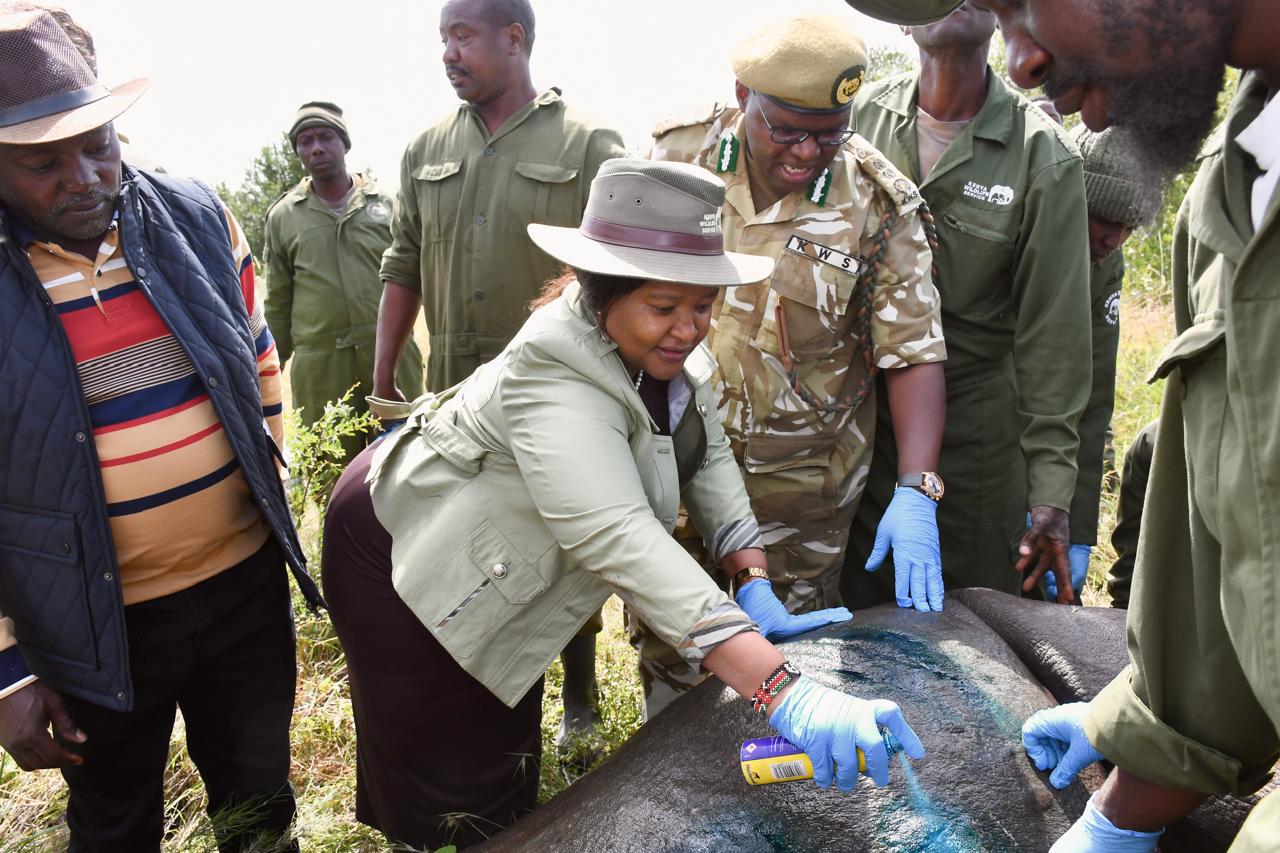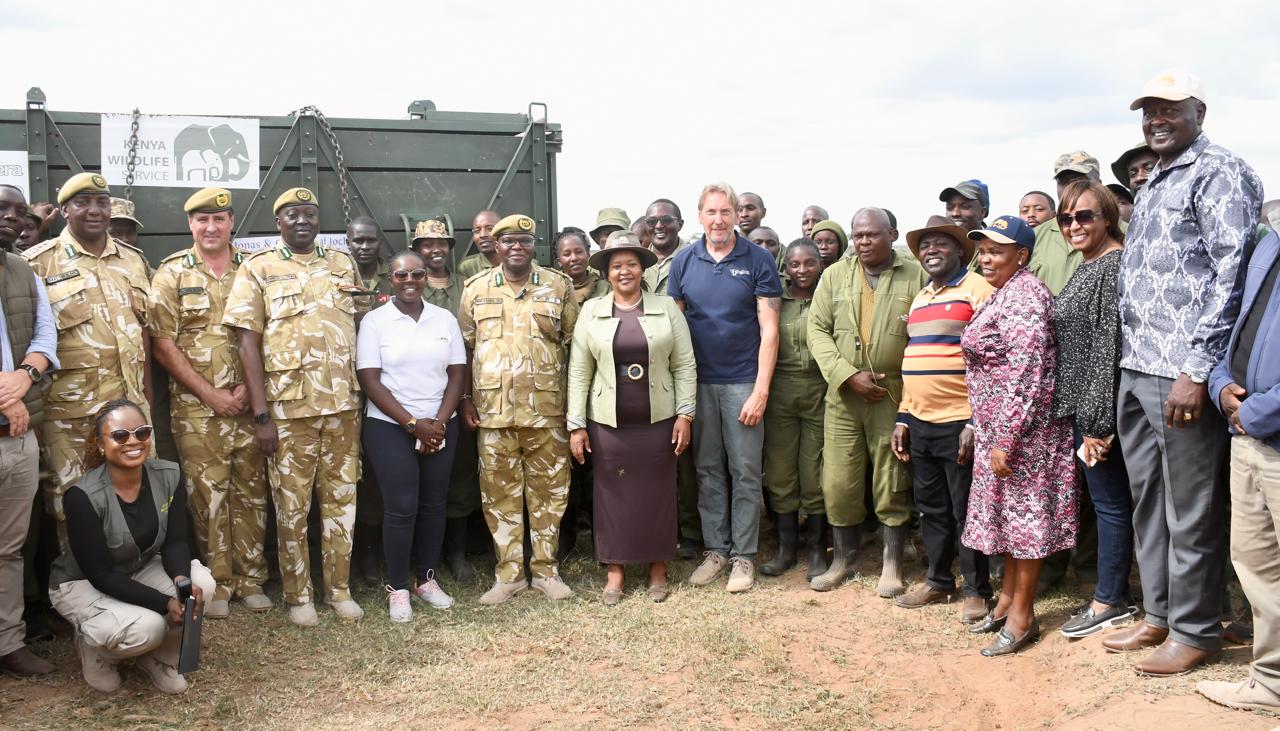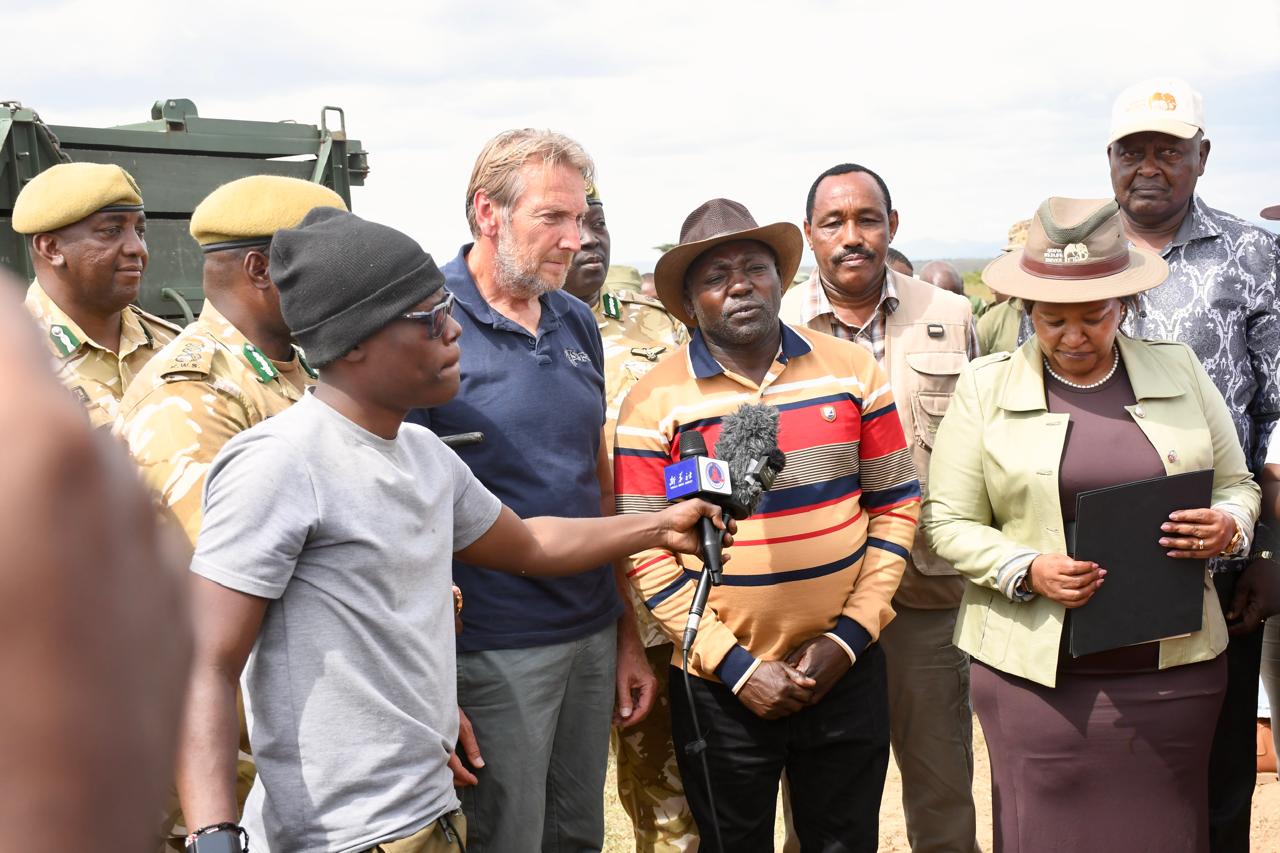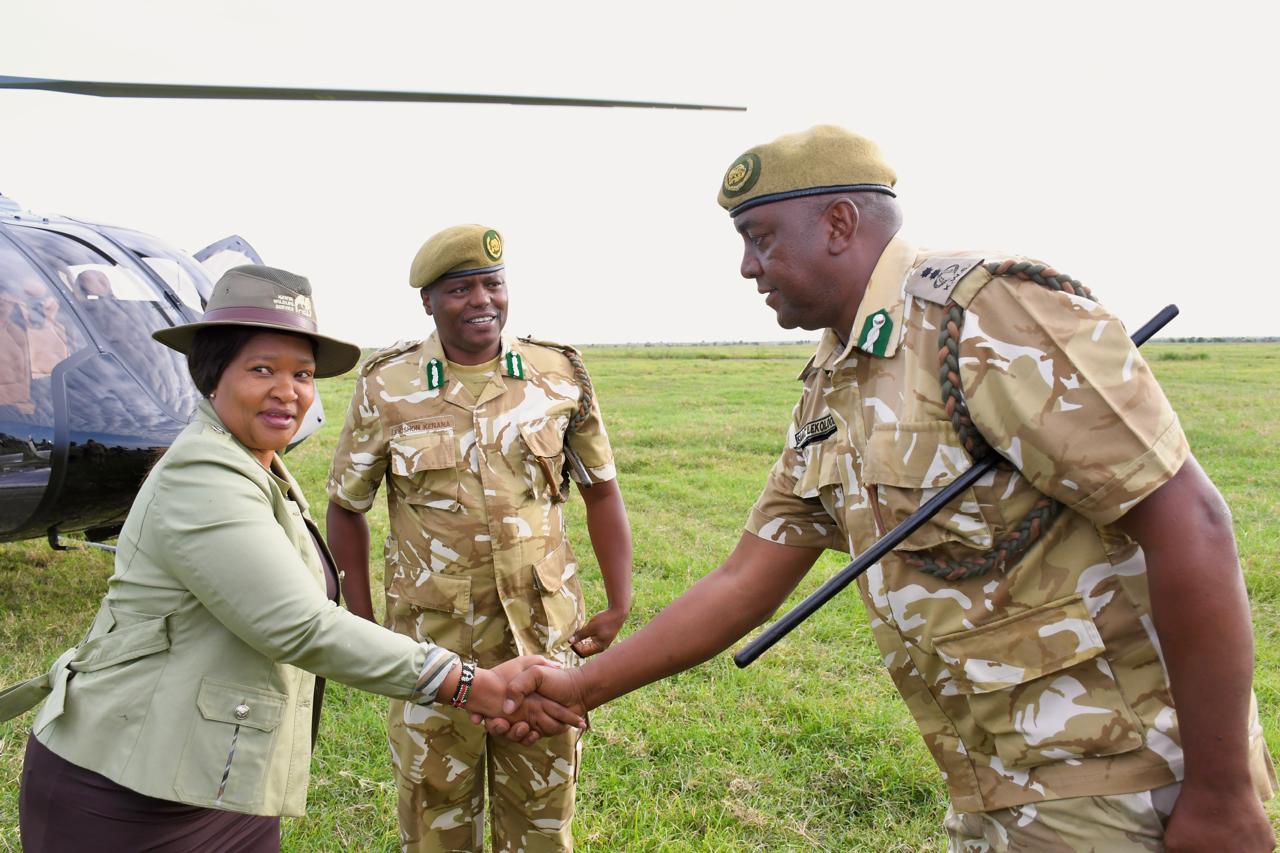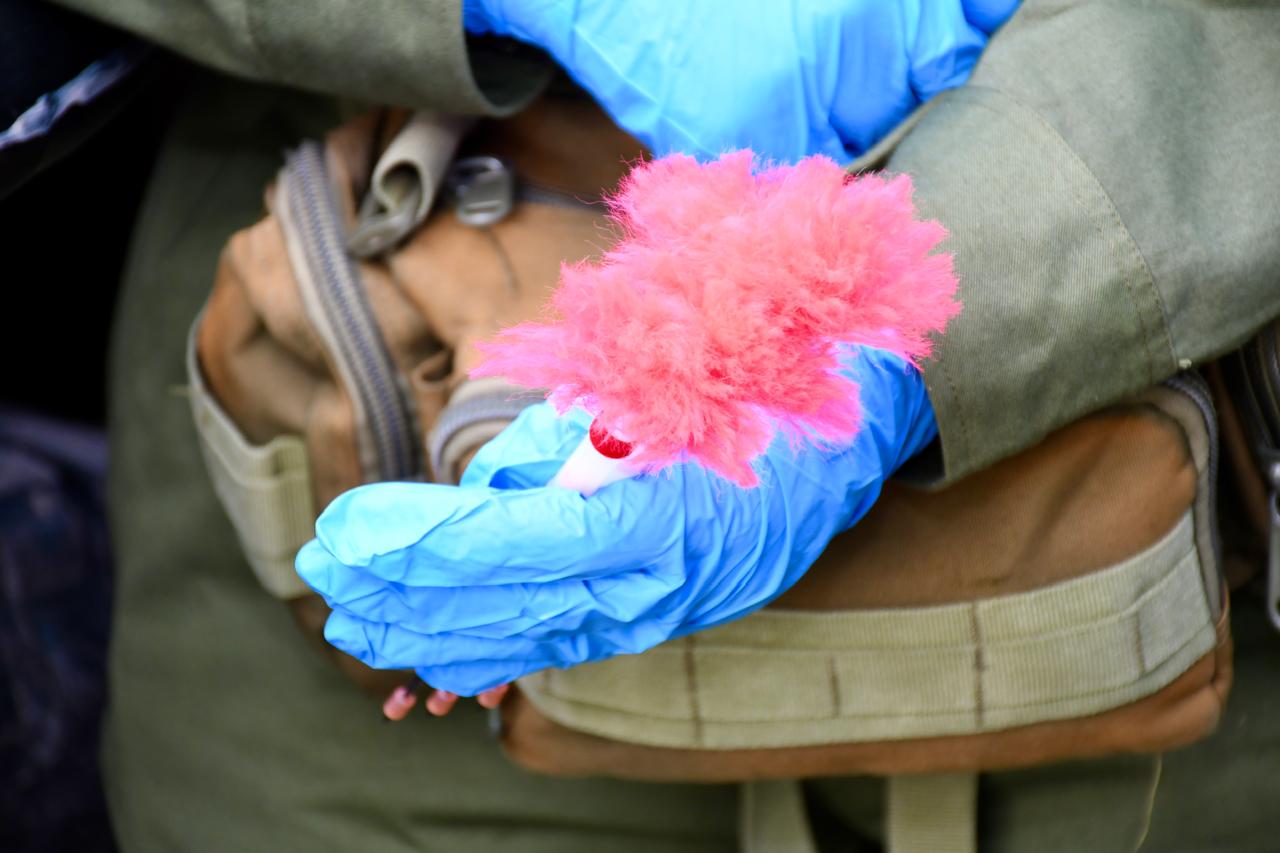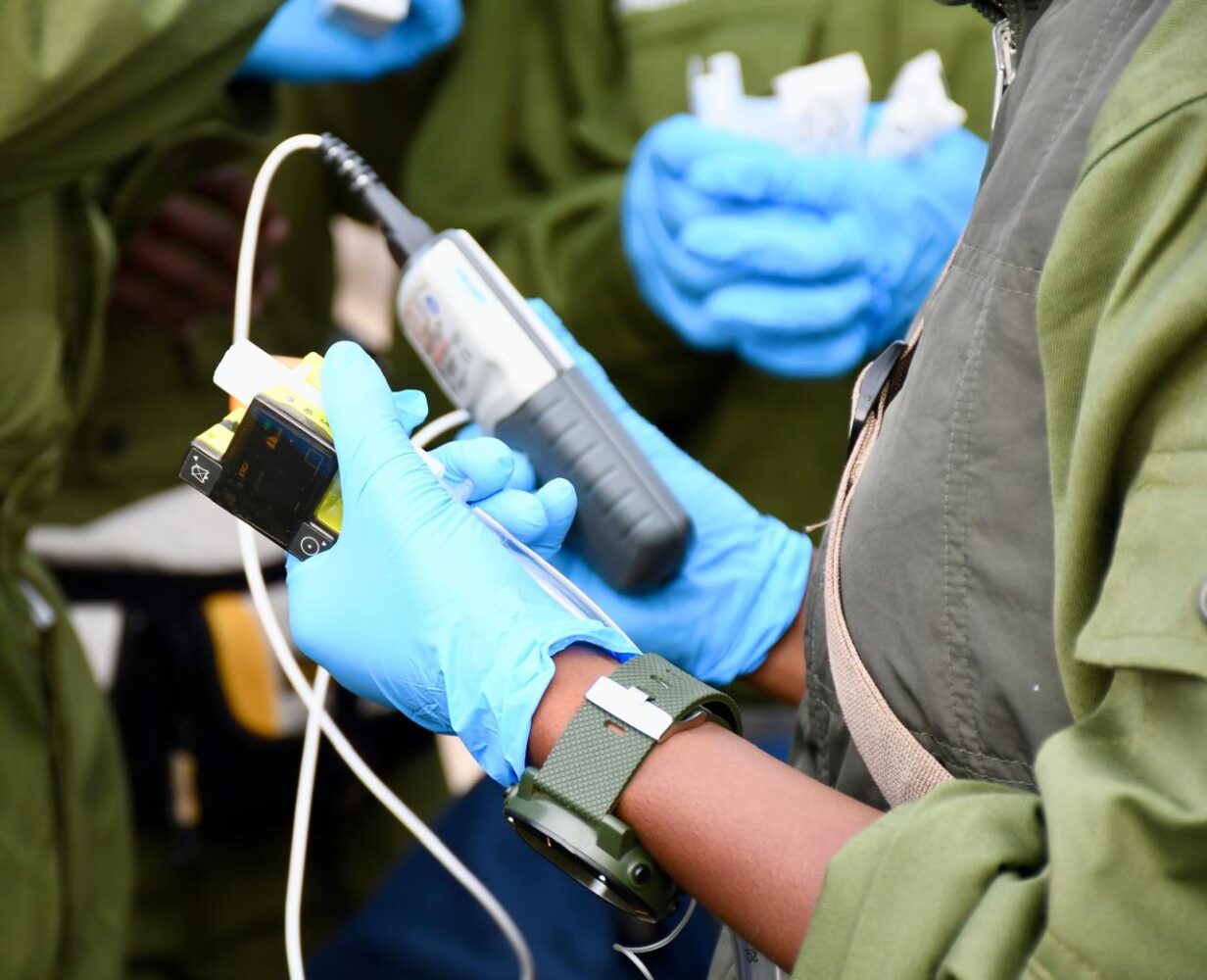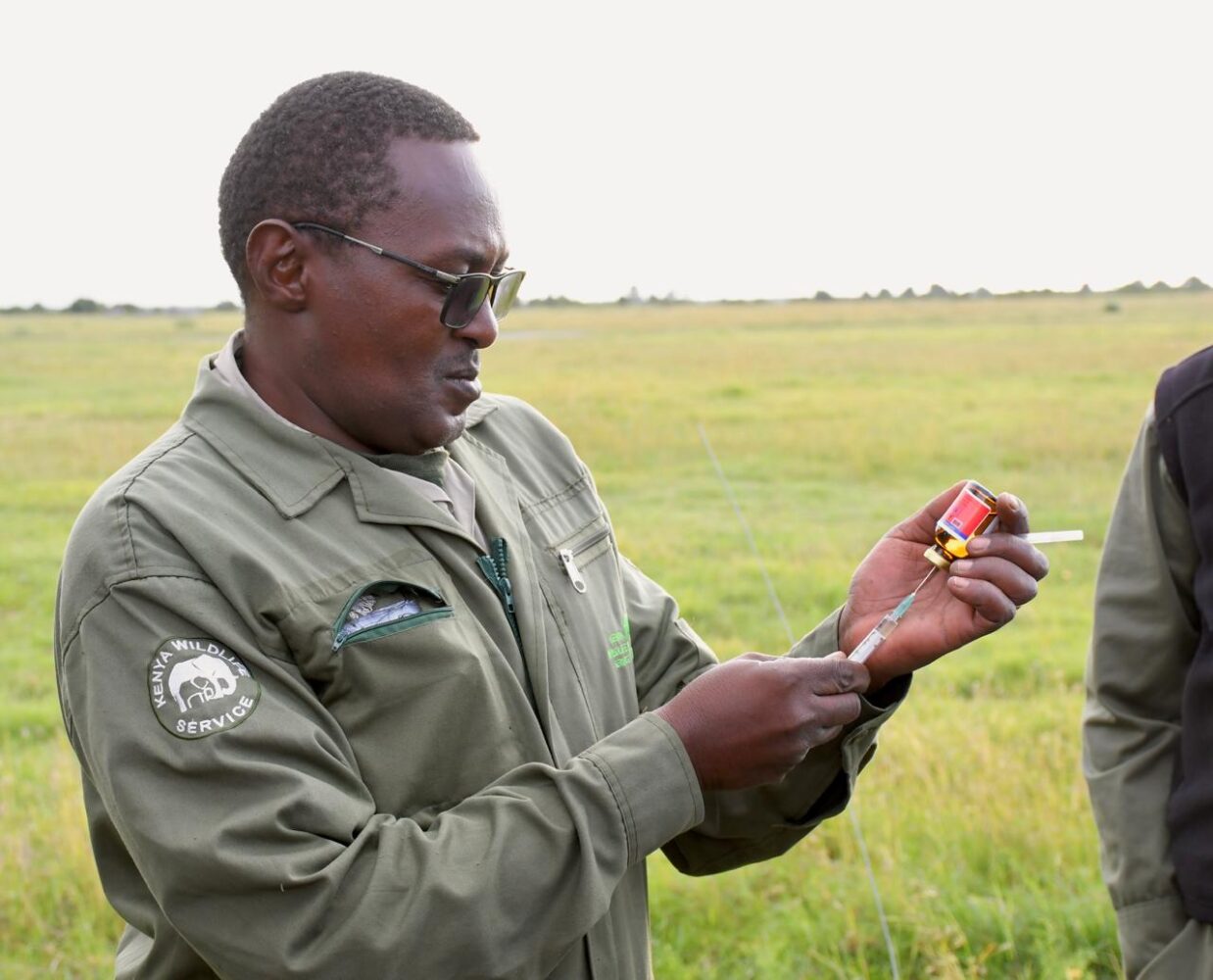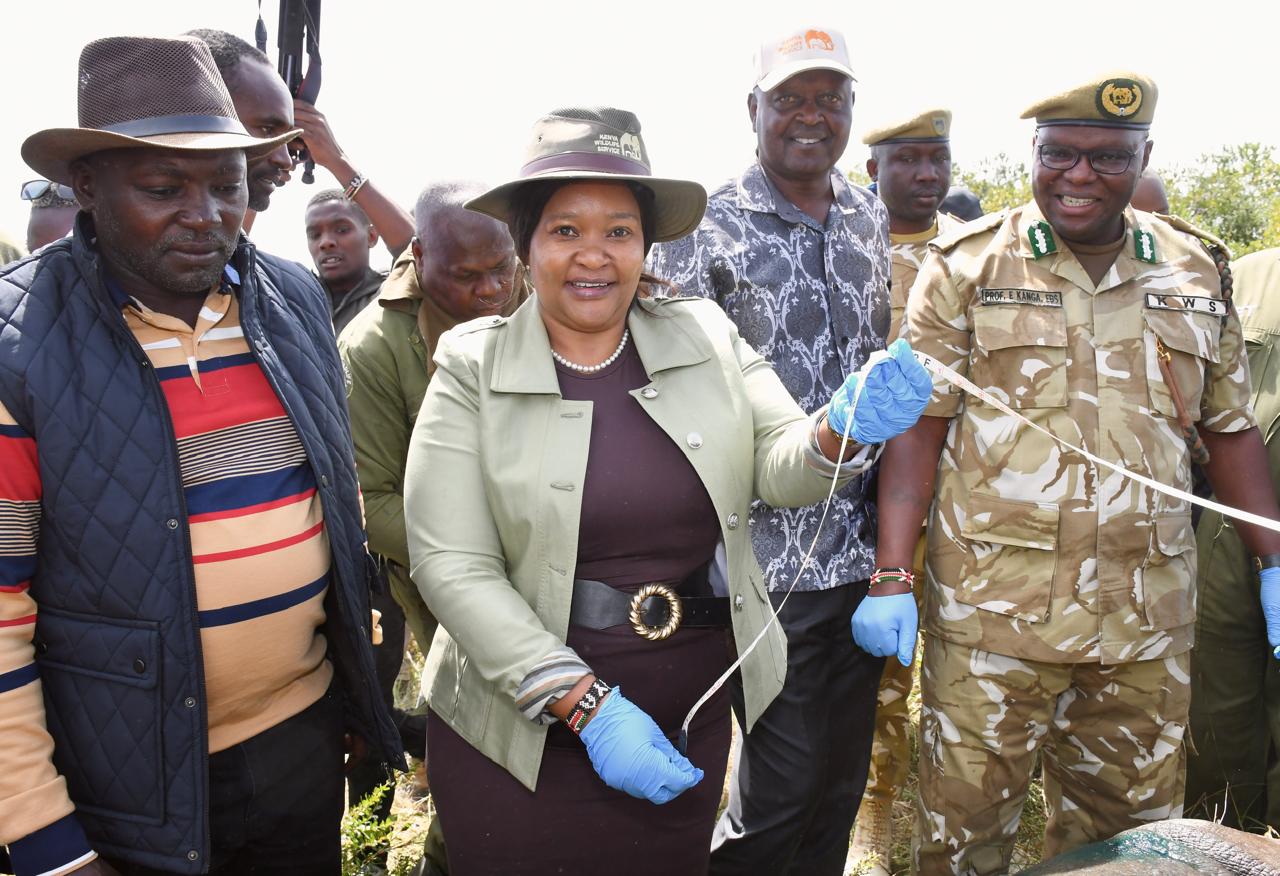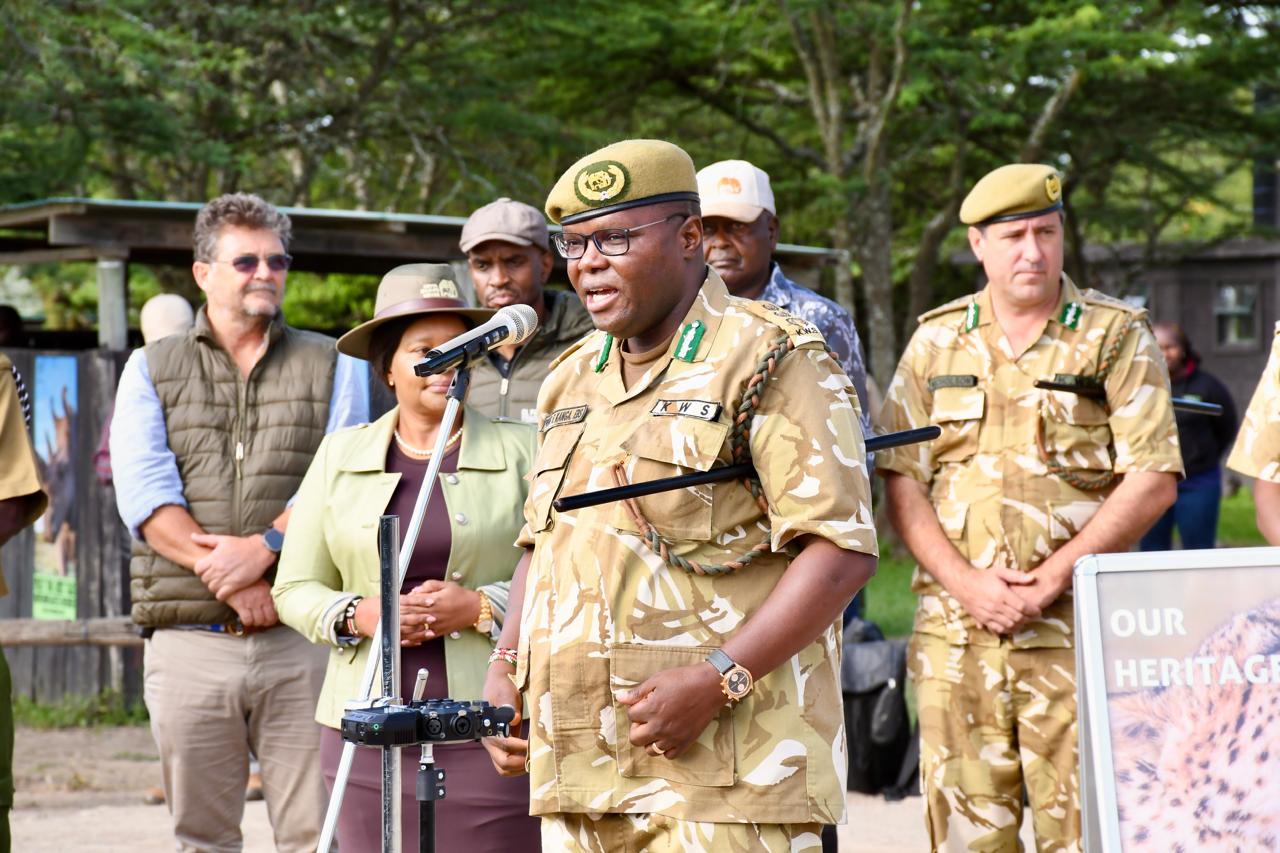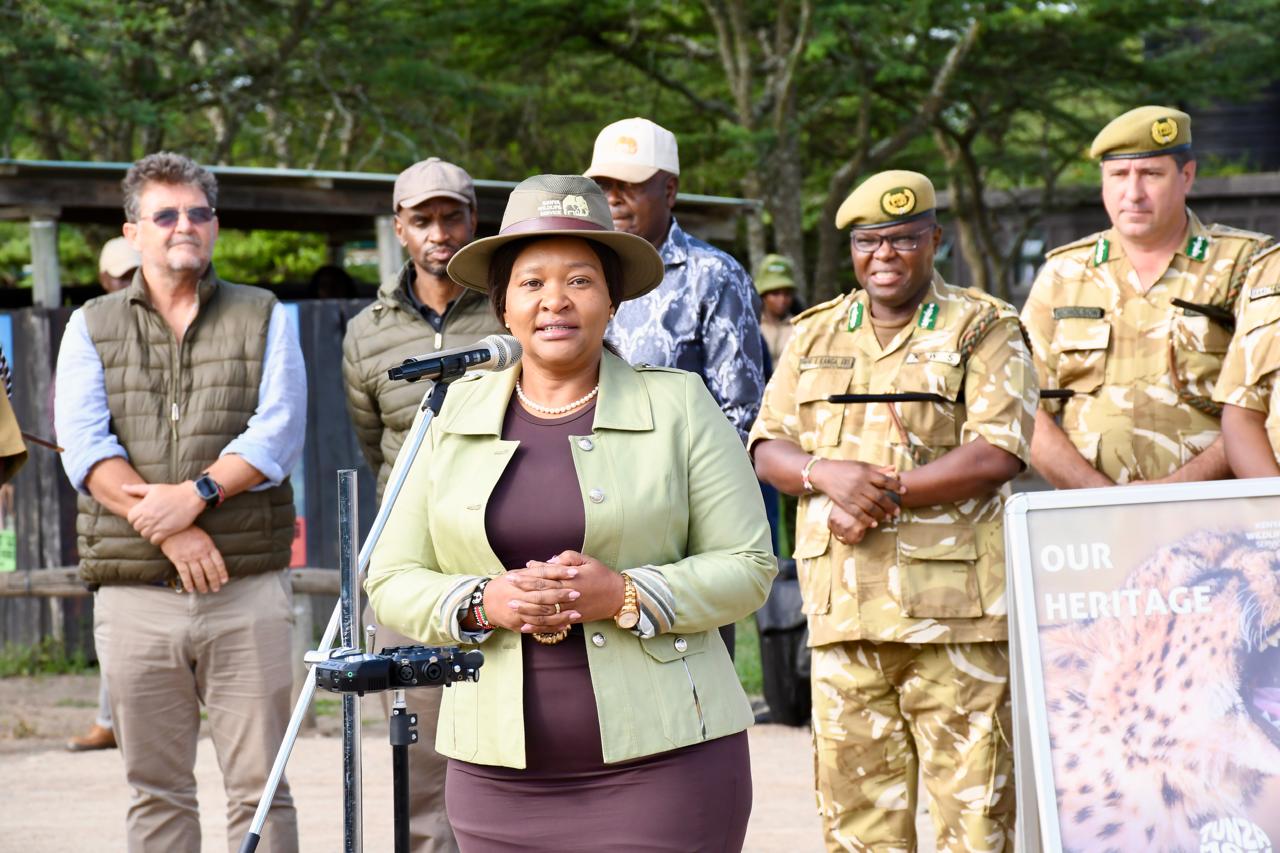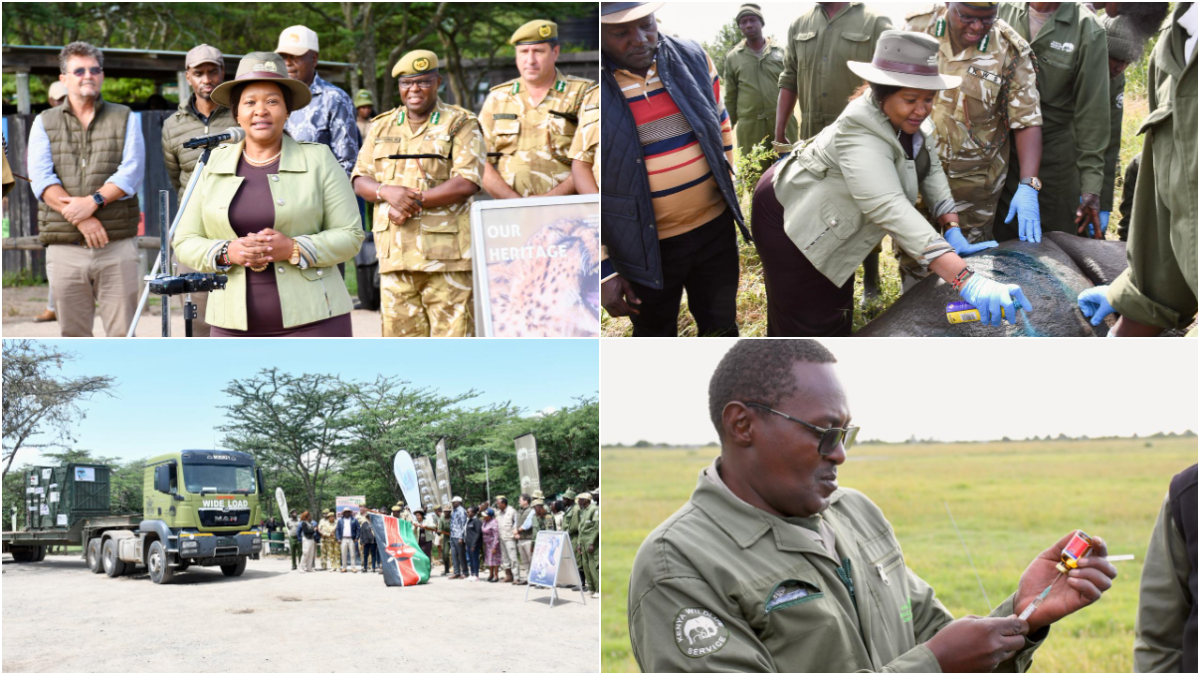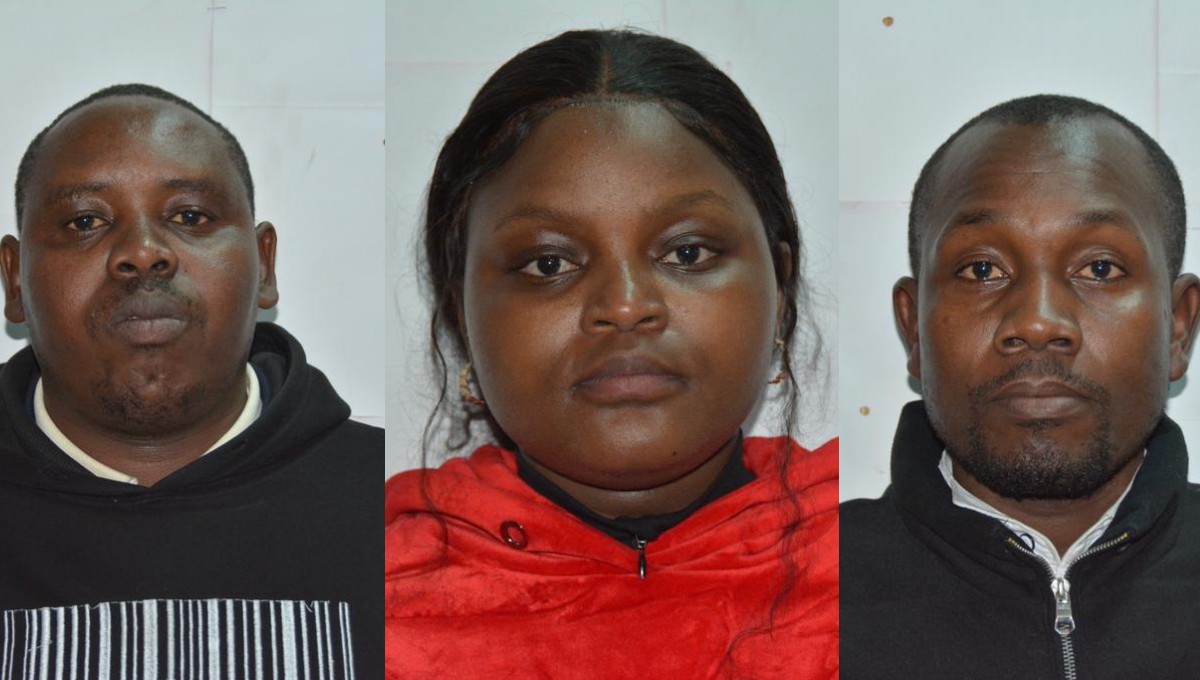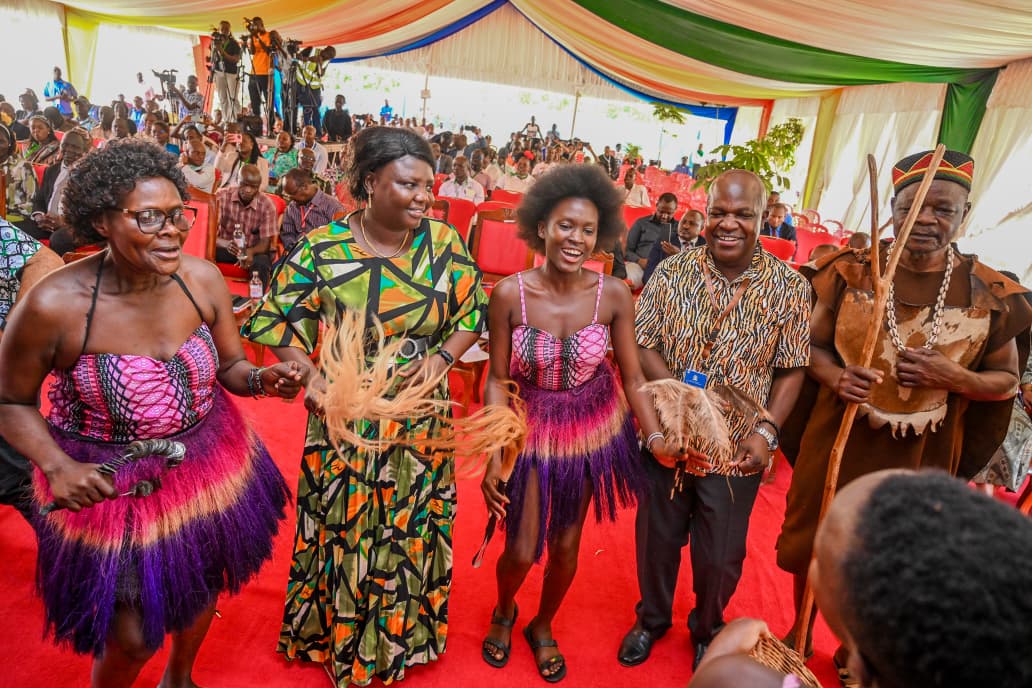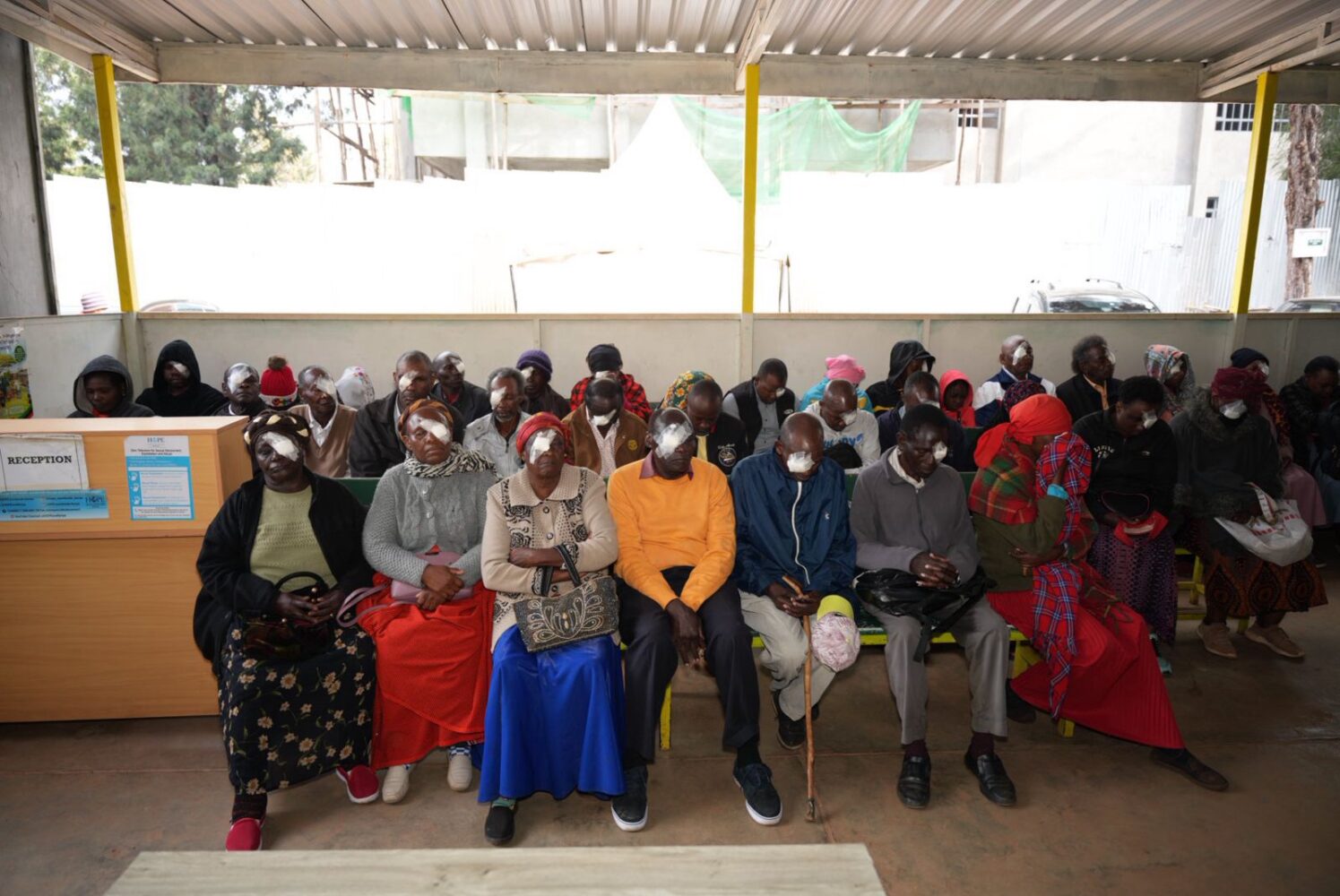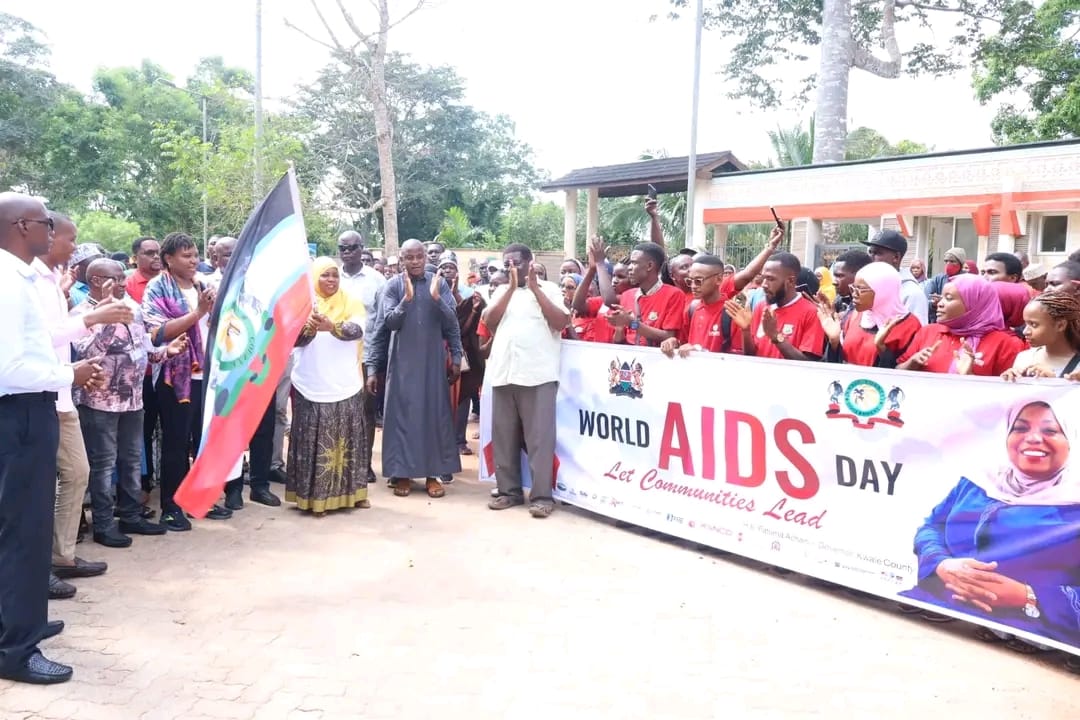LAIKIPIA COUNTY, May 24, 2025 — The Cabinet Secretary, Ministry of Tourism and Wildlife, Hon. Rebecca Miano today presided over the launch of a groundbreaking rhino translocation exercise at the Segera Conservancy in Laikipia County. The project, which is a collaborative effort between Kenya Wildlife Service (KWS) and the ZEITZ Foundation, will see 21 critically endangered eastern black rhinos moved to the 50,000-acre conservancy, marking a significant milestone in Kenya’s wildlife conservation efforts.
The translocation is part of a broader vision to establish what will ultimately become one of the largest rhino sanctuaries in the world by connecting Segera to other conservation areas in the region.
“The translocation is a bold affirmation of Kenya’s enduring commitment to securing a future of one of the world’s most iconic yet critically endangered species.”, said Ms Miano. Kenya is home to 80% of the eastern black rhino population. The black rhino population has grown from 384 in 1989 when Kenya Wildlife Service was established to 1,059 by end of 2024. Kenya also hosts 1,041 southern white rhino from approximately 50 individuals that were introduced from southern Africa in late 80’s to early 2000 and the last known 2 known northern white rhinos. This statistic is clear proof of decades of joint efforts between national government, county governments, communities and conservation partners. However, that notwithstanding, the survival of this species remains precarious”, the Cabinet Secretary added.
“This is rhino translocation marks a significant milestone to reactivate new conservation frontiers in Northern Kenya. Establishment of the Segera Rhino Sanctuary is part of the bigger plan for rhino range expansion to establish the mega Laikipia sanctuary, anchoring a bold new era of vast contiguous rhino range to secure space for connected wildlife landscapes. It is proof that conservation is no longer confined to formally protected areas, it can thrive wherever land, good governance and love for wildlife converge,” said Prof Erustus Kanga, Director-General, KWS.
“This underscores the urgent need for protection of the rhino population,” said Jochen Zeitz, founder of ZEITZ Foundation. “By giving the rhinos a new expansive home, we not only expect to see these numbers increase significantly in the coming years, but it also benefits communities while enhancing biodiversity conservation in the incredible landscapes of Central Kenya.”
Like all other projects by the ZEITZ Foundation, the translocation exercise is expected to deliver tangible and sustainable benefits for land, wildlife and rural communities. The establishment of Segera Rhino Sanctuary will also strengthen the ecological integrity by providing connnected rhino habitats in Central Kenya. For sustainability, local communities around Segera will benefit through employment, capacity building and increased conservation economies. The project also offers unique learning experiences for schools and communities about wildlife conservation and related opportunities.
The rhinos being translocated in the first phase have been born and raised from the neighbouring Ol Pejeta Conservancy (OPC). Samuel Mutisya, OPC’s head of Research and Species Conservation said, “We believe that the future of black rhinos depends on strategic range expansion and collaborative conservation. By contributing nine individuals to the Segera Conservancy, we are not just moving rhinos, we are helping to provide a seed to establish a new population that can thrive in a secure and well-managed landscape. This translocation aligns with our core mission of science-driven species recovery, and we are committed to supporting efforts that strengthen Kenya’s national rhino conservation strategy.”
Enhanced Security and Ecological Monitoring
The translocation process is expected to take approximately 18 days, during which the rhinos will be kept under close observation by KWS specialists to help them adapt to their new home. Enhanced security measures will protect not only the rhinos but also the broader biodiversity of the area and local communities around the conservancy.
Organisers have emphasised that existing land rights and boundaries will be respected and remain unaffected by the rhino translocation. Improved ecological monitoring will also ensure sustainable habitat management and help mitigate human-wildlife conflict.
Segera Conservancy provides the much-needed space to decongest rhino sanctuaries being managed above their ecological carrying capacity and contribute to the national objective of 2,000 black rhinos by 2037.
